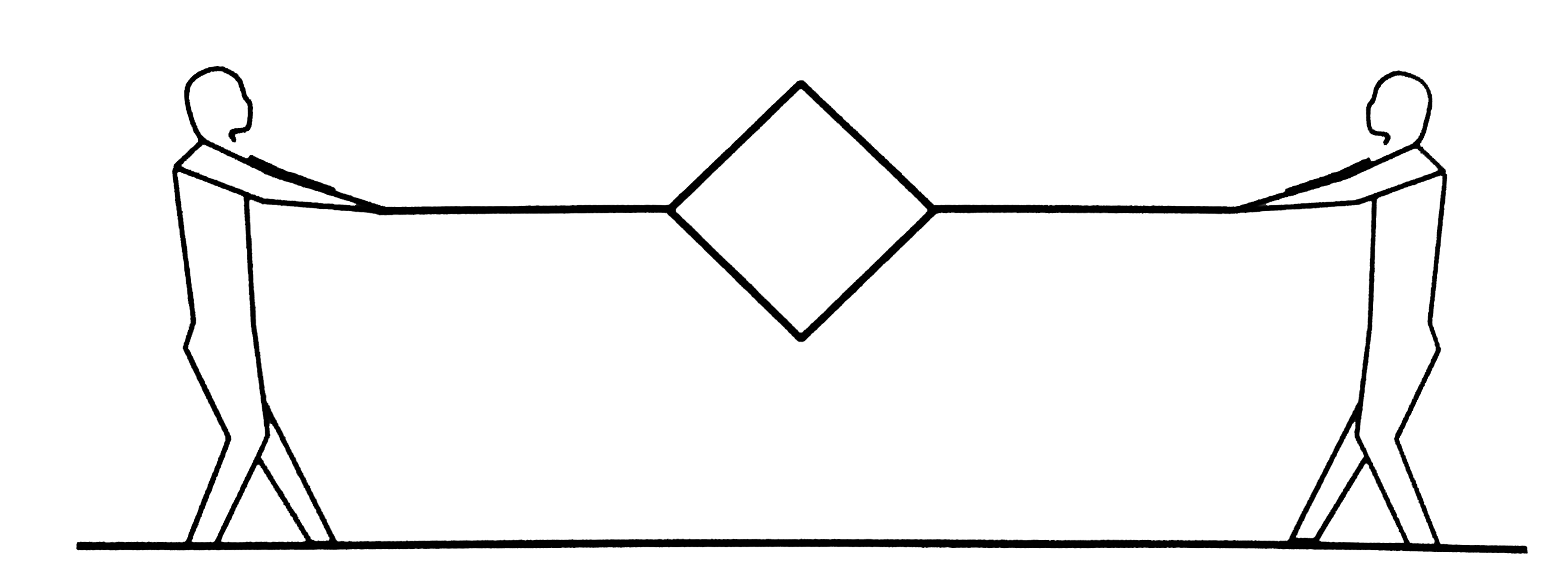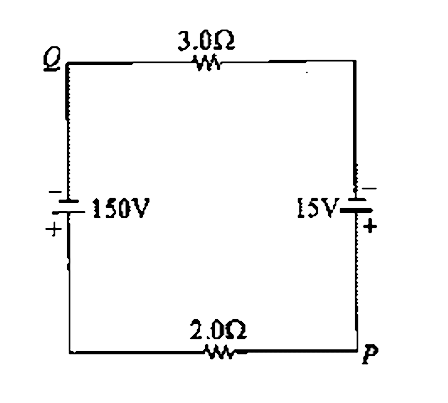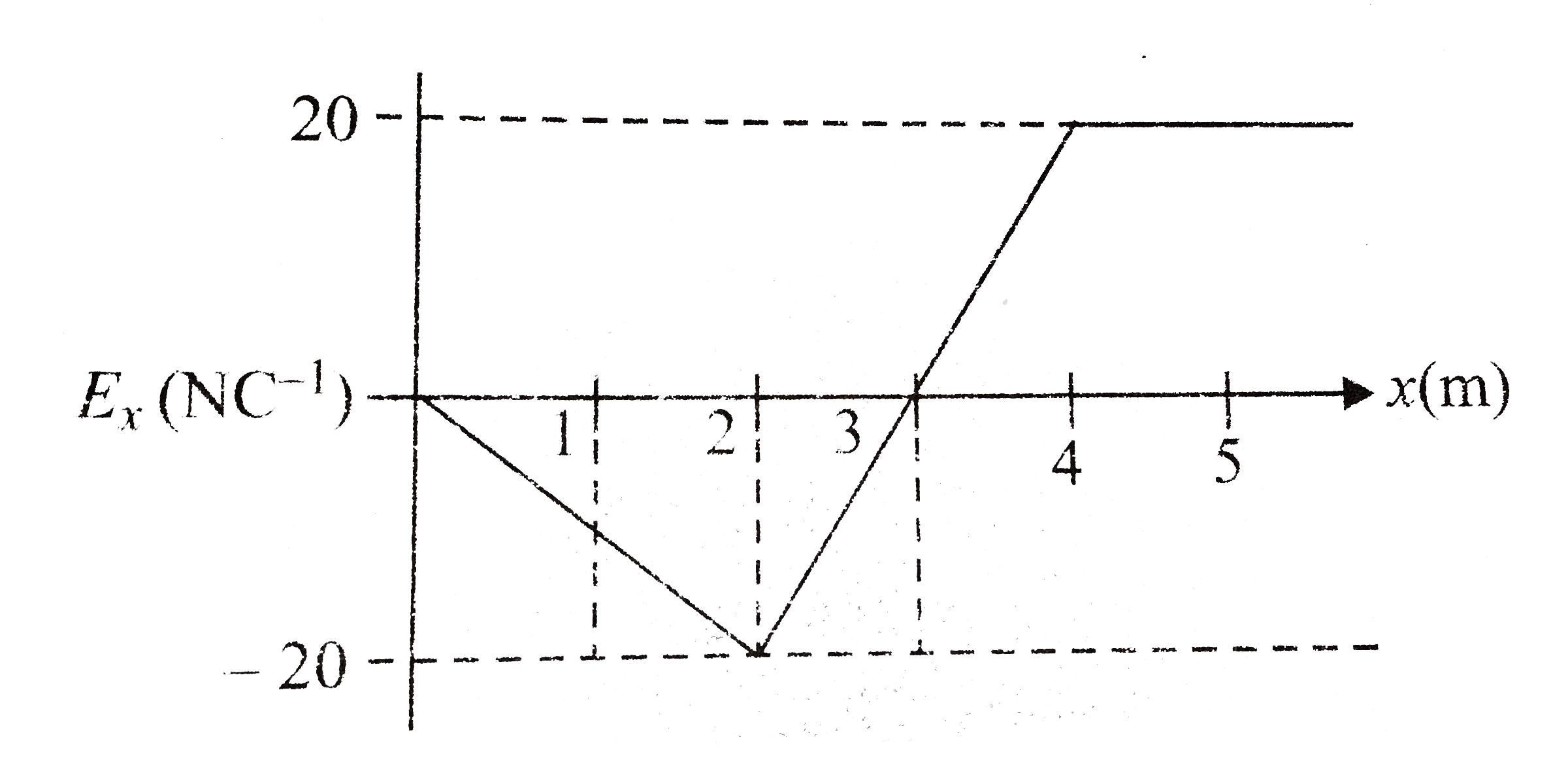A uniform field of 2.0NC−1 exists in space in x direction (a) Taking the potential at the origin to be zero, write an experssion for the potential at a general point (x,y,z). (b) At which points, the potential is 25V ? ( c) If the potential at the origin is taken to be 100V , what will be the expression for the potential at a general point? (d) What will be the potential at the origin if the potential at infinity is taken to be zero ? Is it parctical to choose the potential at infinity to be zero? Solution in Gujrati
(a)E=2N/C∈x−direction
Potential at the origin is '0'
dV=−exdx−eydy−ezdz
⇒v−0=−2x⇒v=−2x
(b)(250−0)=−2x
⇒x=25−2=−12.5m
(c) If potential at the origin is 100V
V−100=−2x
⇒V=−2x+100=100−2x
(d)Potentialat≥≠ralp∮isv'−V=−2x
~v'=v+2x=0+2
Potential at origin is zero it is not practical to take potential at to be zero (Infinity)
Topper's Solved these Questions
- BOOK - HC VERMACHAPTER - ELECTRIC FIELD AND POTENTIALEXERCISE - Objective 28videos
ELECTRIC FIELD AND POTENTIAL
- BOOK - HC VERMACHAPTER - ELECTRIC CURRENT THROUGH GASESEXERCISE - Exercises23videos
ELECTRIC CURRENT THROUGH GASES
- BOOK - HC VERMACHAPTER - ELECTROMAGNETIC INDUCTIONEXERCISE - EXERCISE9videos
ELECTROMAGNETIC INDUCTION
Similar Questions
Mark out the correct potons.
00:59View SolutionA discharge tube contains helium at a low pressure. A large potential difference is applied across the tube. Consider a helium atom that has just been ionized due to the detachment of an atomic electron. Find the ratio of the distance travelled by the free electron to that by the positive ion in a short time dt after the ionization.
04:19View SolutionShown a metallic square frame of edga a in a vertical plane. A uniform magnetic field B exists in the space in a directon perpendicular to the plane of the figure. Two boys pull the opposite corners of the square ot deform it into a rhombus. They start pulling the corners t t=0 and sisplace the corners at a uniform speed u. (a) find the induced emf in the frame at the instant when the angles at these corners reduce to 60∘. (b) find the induced current in the frame at this instatnt if the total resistance of the frame is R. (c) Find the total charge which flows through a side of the frame by the time the square is deformed into a straight line.
 03:08View Solution
03:08View SolutionAn electric field →E=−−−−−−−→i20+→j30NC−1 exists in the space. If the potential at the origin is taken to be zero find the potential at (2m, 2m).
View SolutionA uniform field of 2.0NC−1 exists in space in x direction (a) Taking the potential at the origin to be zero, write an experssion for the potential at a general point (x,y,z). (b) At which points, the potential is 25V ? ( c) If the potential at the origin is taken to be 100V , what will be the expression for the potential at a general point? (d) What will be the potential at the origin if the potential at infinity is taken to be zero ? Is it parctical to choose the potential at infinity to be zero?
03:40View SolutionA uniform electric field poiting in poistive x-direction exists in a region. Let A be the origin, B be the point on the x-axis at x=+1cm and C be the point on the y-axis at y=+1cm . Then the potentials at the points A, B and C satisfy:
07:11View SolutionThe potential of a point B (-20m, 30m) taking the potential of a point A (30m, -20m) to be zero in an electric field →E=10xˆi−20ˆjNC−1 is
02:34View SolutionIn figure-3.105, if the potential at point P is 100V, what is the potential at point Q?
 01:04View Solution
01:04View SolutionA uniform field of 8 N/C exists in space in positive x-direction. (a) Taking the potential at the origin to be zero, write an expression for the potential at a general point (x, y, z). (b) At which points, the potential is 160 V ? (c) It the potential at the origin is taken to be 80V, what will be the expression for the potential at a general point ? (d) What will be the potential at the origin if the potential at x = infinity is taken to be zero ?
View SolutionAn electric field vec E=(25hat i+30hat j)NC^(-1) exists in a region of space.If the potential at the origin is taken to be zero then the potential at x=2m y=2m is : (A) -110V (B) -140V (D) -120V -130V
01:46View SolutionAn electric field →E=−−−−−−−→i20+→j30NC−1 exists in the space. If the potential at the origin is taken to be zero find the potential at (2m, 2m).
02:02View SolutionIn the circuit shown in the figure, if potential at point A is taken to be zero, the potential at point B is
 01:45View Solution
01:45View SolutionIn the circuit shown in the figure, if the potential at point A is taken to be zero, the potential at point B is
05:49View SolutionAn electric field E=(20ˆi+30ˆj) N/C exists in the space. If the potential at the origin is taken be zero, find the potential at (2m,2m).
03:10View SolutionA graph of the x-component of the electric field as a function of x in a region of space is shown in figure. The y−andz−compo≠nts of the electric field are zero in this region. If the electric potential is 10 V at the origin, then the potential at x = 2.0 m is
 01:45View Solution
01:45View SolutionThe potential of a point B (-20m, 30m) taking the potential of a point A (30m, -20m) to be zero in an electric field →E=10xˆi−20ˆjNC−1 is
03:32View Solution

